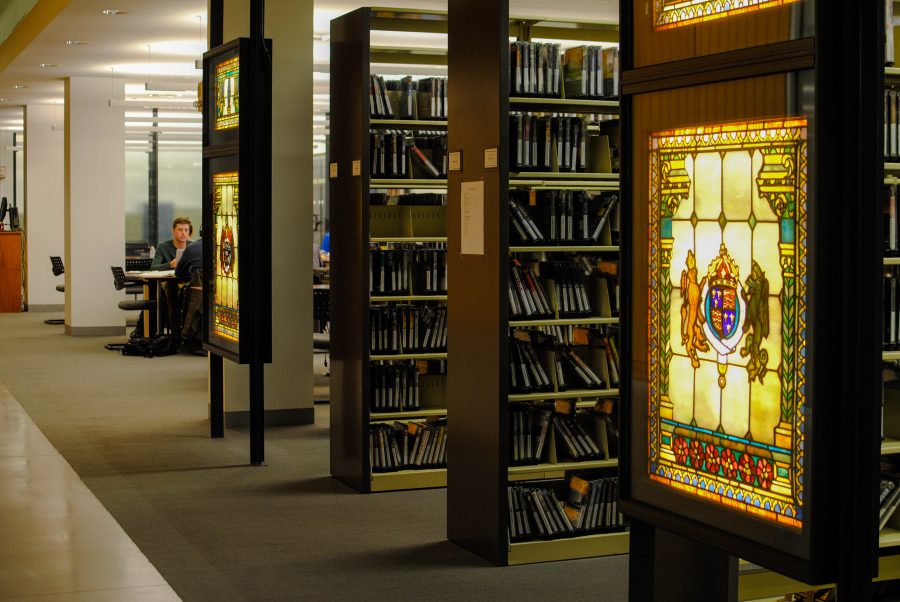Glassmaker Louis Comfort Tiffany saw art in a new light.
“Tiffany Glass: Painting with Color and Light,” one of the three exhibitions for “Tiffany at Lafayette,” will be showcased at the Williams Center Art Gallery starting today and running through June 4.
The Neustadt Collection of Tiffany Glass in New York organized the gallery. It consists of five windows, 19 lamps and 75 pieces of opalescent flat glass. It is named after legendary glassmaker Tiffany’s use of opalescent translucent glass pieces in his artwork to capture light and color. In the same way that a painter uses paints on canvas, Tiffany used colored glass as a medium to create works of beauty and interpret the world.
The term “Tiffany Glass” refers specifically to the many different kinds of glass art produced by Tiffany throughout his career, which spanned from 1878 to 1933. He worked with many different glass types in his career, including opalescent, fracture and his patented “favrile” glass. These different types of glass capture color with varying degrees of opacity, depth, texture, and iridescence, making each piece markedly different in how it captures the color and designs of the artists.
He used these pieces of glass to manipulate light and color, creating an impressionistic look to his glass “paintings.” Tiffany creatively putting together leaded-glass windows and lampshades in vibrant bright colors and richly varied patterns, textures and opacities in ways that innovated and reshaped how glass was presented in art.
Tiffany’s work makes up an integral part of fine art collections around the globe, including the Haworth Gallery in Accrington, England, and the New York glassmaker’s work appears in many churches and chapels that were constructed when he was alive.
In addition, there will be educational models demonstrating the selection and fabrication of leaded-glass shades, along with three examples of Tiffany lamp forgeries to address the topic of authenticity in art.
This exhibition will be available for free to view throughout the run. It was made possible by the generous support of alumni Ellen Kravet Burke ‘76, Ray Burke ‘75, and Mr. & Mrs. Larry Kravet, Floral Park, New York.






































































































